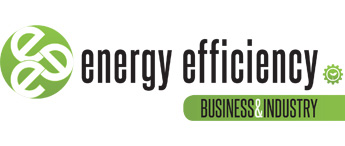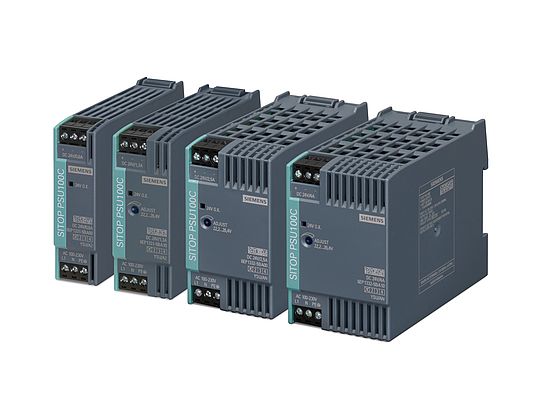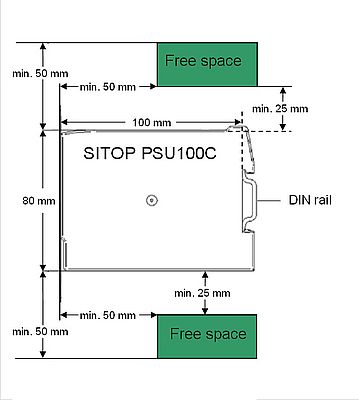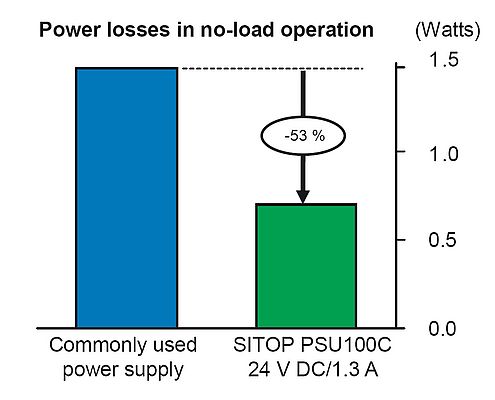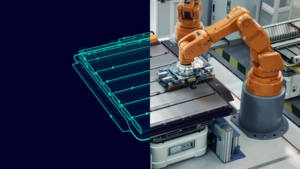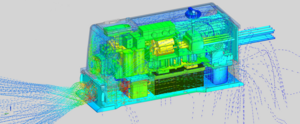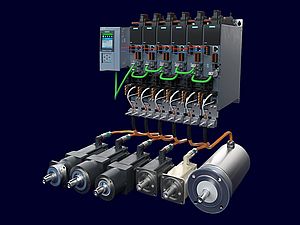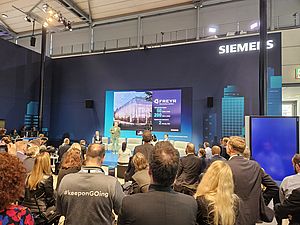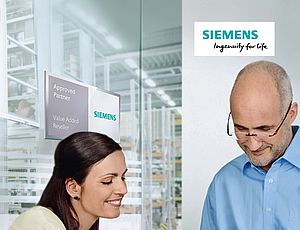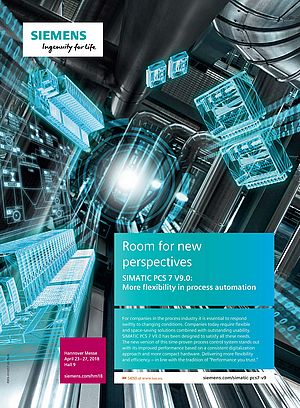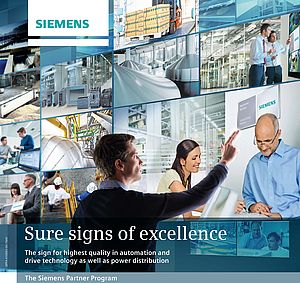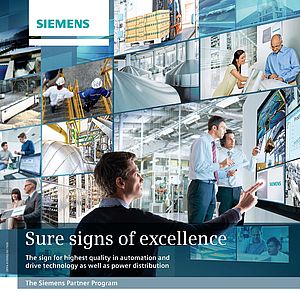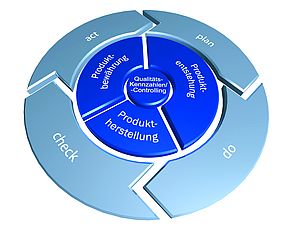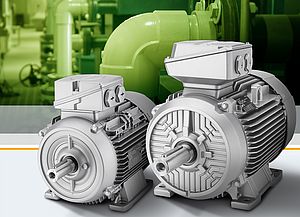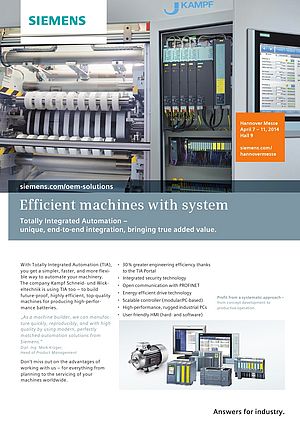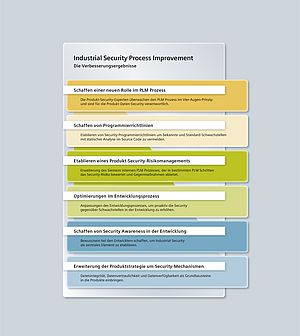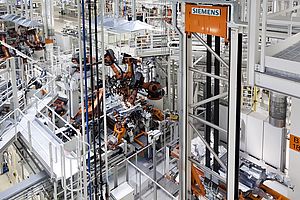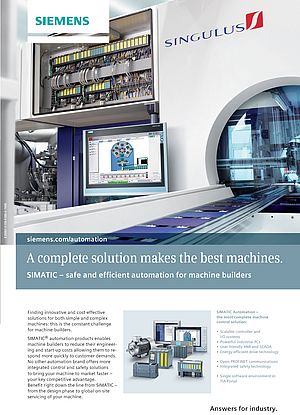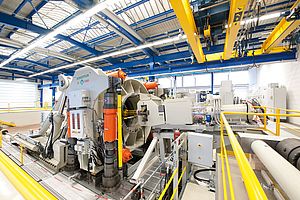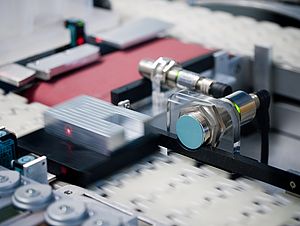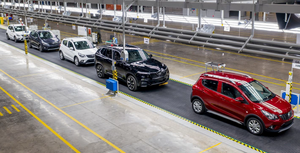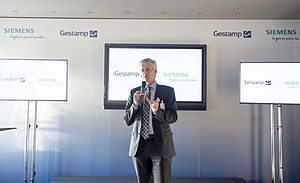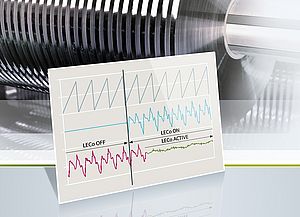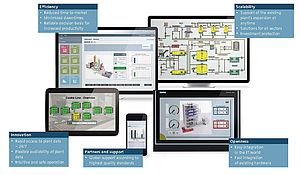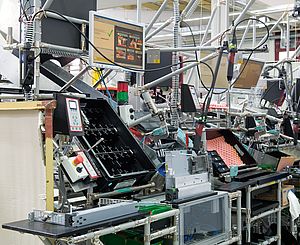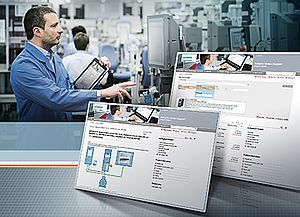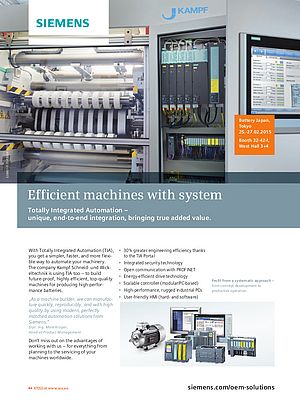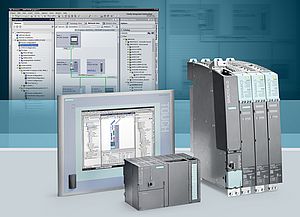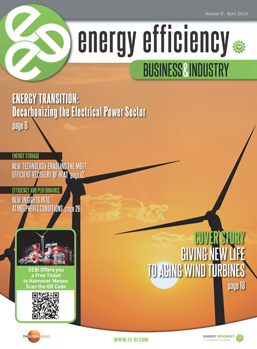With SITOP compact, Siemens has realized a new series of industrial power supplies that is second to none in terms of minimum space and energy requirements. Optimally suited for the use in control boxes or cabinets of decentralized applications, they reliably supply 12 or 24 V.
Exceptionally slim, exceptionally space-saving and exceptionally energy-saving – three attributes that characterize the new product line of industrial power supplies by Siemens. Its name: SITOP compact; the device name itself: SITOP PSU100C.
All power supplies of the new series possess a wide-range input for 1-phase AC networks from 85 to 264 V as well as for DC networks from 110 to 300 V. They are designed for operating temperatures between -20 and +70 °C and, except for the 24 V/0.6 A model, possess a potentiometer for adjusting the output voltage.
Reliable and convenient
Like all primary-timed switching power supplies by Siemens, the new 1-phase power supplies SITOP PSU100C also distinguish themselves through an especially high reliability and quality of the output voltage. The wide-range input enables the connection to virtually any 1-phase network in the world. As is the case with all SITOP power supplies by Siemens, the CE and UL marks are standard. In addition, the new devices are approved for special applications in potentially explosive environments (ATEX Category 2) – and therefore are very versatile.
Their connection method via removable, screw-type plug-in terminals, which also allows spring-type terminals to be used, makes the power supplies exceptionally user-friendly. Should power requirements change, only the device needs to be changed – without additional wiring work at the terminals. No tools are required for the installation or deinstallation.
Exceptionally slim and space-saving
With a width of 22.5 mm (24 V/0.6 A), 30 mm (24 V/1.3 A and 12 V/2 A), 45 mm (24 V/2.5 A) or 52.5 mm (24 V/4 A and 12 V/6.5 A), a height of 80 mm and a depth of 100 mm, the SITOP PSU100C power supplies are among the slimmest and most compact of their class – taking up to a third less space on the DIN rail than comparable power supplies. Since the SITOP PSU100C devices, like all SITOP power supplies, do not need a fan – as they are cooled by natural convection – they can be placed directly next to other components on the DIN rail due to their low power dissipation (see below) and correspondingly low generation of heat, i.e., a lateral minimum distance does not need to be observed. Thanks to an especially clever design, it was also possible to once more reduce the installation clearances above and below that are required for the convection. The benefit: The resulting free space can be used, e.g., for the installation of a cable conduit. This again saves space in the control cabinet and therefore money.
Focusing on Energy Efficiency
Power supplies for industrial applications or building services are normally designed in such a way so that they offer the highest possible efficiency at maximum load. During operation, though, they are often run in a load range of only 30 to 70% of the maximum output (nominal output) – depending on the electricity consumers connected. During production-free periods or idle times, when individual electricity consumers or plant sections are switched into a “standby mode”, the load consumed actually approaches nearly zero. An energy-efficient power supply therefore also needs to have a low energy consumption while there is no load – even more so, if idle times occur very frequently.
During the development of the new regulated power supplies SITOP compact, particular attention was thus paid to achieving maximum efficiency and a correspondingly low power dissipation while operating at a partial load, i.e., in a load range between 30 and 70% of the maximum output (nominal output). At the same time, no-load losses were also to be as small as possible. As technical approach, the quasi-resonant operation of a flyback converter was chosen. For power ratings up to 100 W, this not only promises an optimal price-performance ratio, but also especially low switching losses and consequently a low power dissipation. Another advantage is that the electromagnetic interference is considerably lower than in applications with direct switching. To keep the no-load losses to a minimum, a control IC specifically developed for this was integrated into the switching electronics of the power supply. Since the IC itself only consumes a fraction of the power compared to earlier components, the entire switching electronics can be executed much more energy-efficiently. The result of this development are no-load losses of less than 1 W, which compared to standard power supplies available on the market is exceptionally low.
35% less Electricity
Another challenge was the output voltage regulation at partial to no load. Unlike in the consumer sector, it is not known from the outset which electricity consumers are to be supplied when with electric power by an industrial power supply. And it is also not clear how tolerant the individual electricity consumers are with regard to voltage fluctuations. Industrial devices thus have to be prepared for any load and supply a stable output voltage without voltage fluctuations over the entire load range. To satisfy the high requirements here and nevertheless be as energy-efficient as possible, the device utilizes a kind of energy-saving mode, which does not affect the high quality of the output voltage. This occurs in a fraction of a second – without the load “noticing” it in the output voltage.
Compared to usual industrial power supplies, the power supplies SITOP compact achieve energy savings of approximately 28% during load operation and even approximately 53% during no-load operation. In normal use, i.e., a mixture of load and standby operation, up to 35% of energy can be saved.
Slim for Control Boxes
Due to their extremely space-saving, slim form factor, the new power supply line SITOP compact for the lower power range is especially suitable for the field of decentralized applications in control boxes or small control cabinets found in industry, infrastructure and building services: They range from standard machine and special machine construction to air conditioning, materials handling, safety and traffic technology to renewable energies and agriculture. Another competitive advantage of ever-increasing importance is its low power dissipation over the entire load range including no-load. This fact predestines it particularly for supplying power to machines and plants that are partially or frequently in standby mode.
